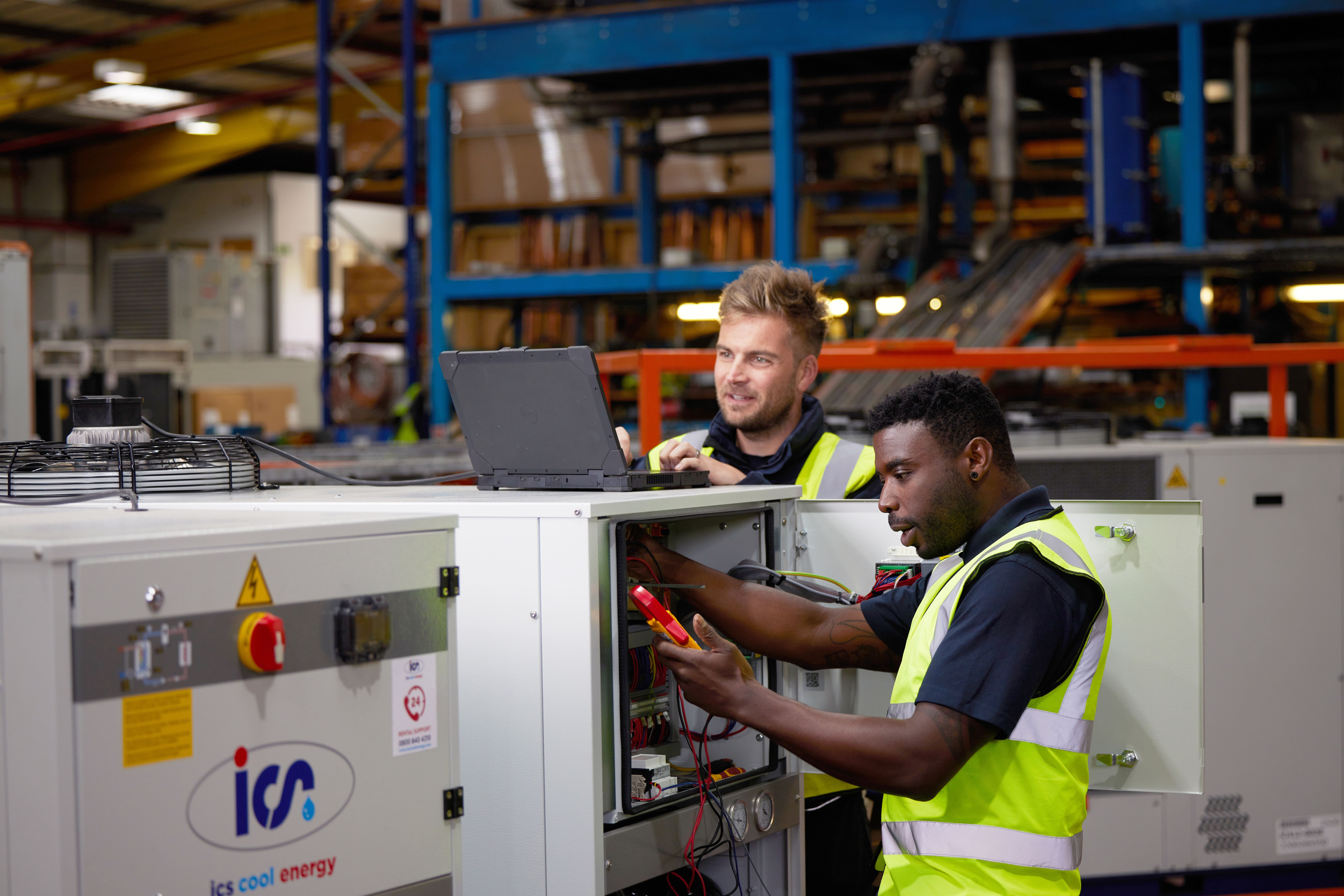Updated: May 15, 2025
The Hidden Costs of Poor Water Treatment in Cooling Systems
Efficiency, reliability, and longevity are critical considerations in managing closed-circuit process chillers. While these units form the backbone of commercial and industrial cooling systems, their performance depends heavily on proactive and informed maintenance, especially regarding water treatment. Ignoring or inadequately managing water quality can significantly diminish system performance and drive up operational costs. Effective water treatment safeguards cooling systems against a range of issues, from corrosion and microbial contamination to fouling and scaling. Engineers who overlook this maintenance procedure can inadvertently introduce severe complications that compromise both system integrity and productivity
Common Consequences of Inadequate Water Treatment
1. Premature Pump Seal Failure
Debris and sludge circulating in poorly treated water can accelerate wear on pump seals. Blockages further exacerbate this by causing overheating, resulting in early equipment failure and increased maintenance frequency.
2. Poor Heat Exchange Efficiency
The formation of scale and sediment layers within heat exchangers restricts thermal transfer capabilities. Partial blockages from sludge or corrosion debris further impede fluid flow, significantly reducing cooling efficiency and increasing energy consumption.
3. Corrosion and Component Breakdown
Improper chemical management can lead to mineral precipitation, causing valves and heat exchangers to fail prematurely. Corrosive water chemistry not only deteriorates metal surfaces but fosters biofilm development and microbiologically influenced corrosion (MIC), exacerbating damage.
4. Operational Downtime and Reduced Throughput
Fouling caused by inadequate water treatment slows cooling cycles in process equipment, such as injection molding machines, directly impacting production schedules and profitability. Poor heat exchange in cooling equipment can also limit operational capacity, causing similar delays in production.
5. Blockages and Flow Issues
Corrosion by-products, algae, and bacterial sludge accumulate, obstructing strainers and smaller fluid pathways within the system. This results in restricted flow rates, equipment inefficiencies, and increased energy costs.
Strategies for Effective Water Treatment
Regular Monitoring and Maintenance
Consistent inspections of pumps, valves, and heat exchangers are essential. Regular water quality testing—covering pH, total dissolved solids (TDS), hardness, and microbiological counts—should be integral to maintenance routines.
Targeted Chemical Treatment
Selecting appropriate corrosion inhibitors, scale inhibitors, and biocides tailored to your system’s specific needs is crucial. A robust chemical management protocol not only prevents system degradation but extends equipment life.
System Upgrades
Implementing automated dosing equipment and remote monitoring systems enhances precision and responsiveness. These technological solutions ensure chemical dosing accuracy, maintain consistent water quality, and enable early identification of issues.
Professional Expertise and Training
Collaborating with water treatment specialists ensures your maintenance programme aligns with industry best practices. Regular training equips your maintenance teams with the knowledge needed to identify potential issues proactively, preventing downtime and costly repairs.
Conclusion
Water treatment is not simply an operational expense but an essential investment in your cooling system’s performance and reliability. Adopting a comprehensive water management strategy mitigates risks, reduces maintenance costs, and safeguards long-term operational efficiency.
For expert advice and tailored solutions, consulting with experienced water treatment professionals is highly recommended. Such proactive management protects your equipment investment and secures uninterrupted, efficient production.
Find out more about our water treatment service
Related Articles

October 30, 2025
Meeting the Pressures of Modern OEM Design. Why Accredited Cooling Systems Make the Difference
Tight budgets, compressed timelines, and rising expectations: how OEMs can help ensure reliability and performance of their solutions through smarter cooling partnerships. Original equipment manufacturers...
Read More
September 12, 2025
Size Does Matter – Especially When It Comes to Pipes in Process Temperature Control
There are several reasons why correct pipework selection is critical for the performance, efficiency, and reliability of temporary hire systems. ICS Cool Energy recognises that...
Read More
May 20, 2025
Why Seasonal Energy Performance Ratio (SEPR) Matters for Process Cooling.
The Manufacturer’s Perspective on Energy Efficiency, Compliance and Sustainability In the world of process cooling, selecting the right equipment is no longer just about capacity...
Read More